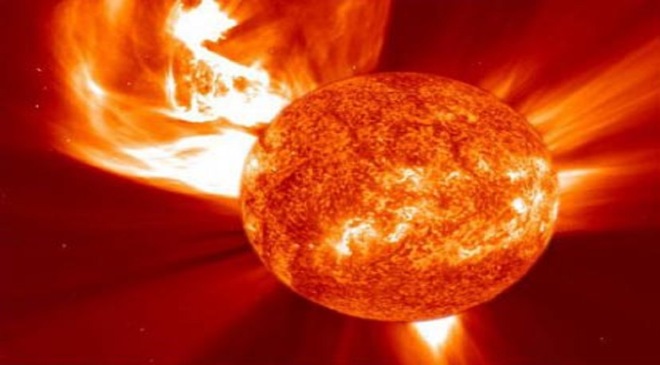Yesterday, it was reported that solar activity is about to pick up with a new giant sunspot coming into Earth’s view, which appears to contain a huge amount of unstable delta magnetic charge. But before it can terrorize Earth, we have to face another solar storm threat. Right now, a cloud of coronal mass ejection (CME) is moving towards the Earth, which is expected to deliver glancing blows. It was released after a magnetic filament in the Sun’s southern hemisphere erupted. The CME is expected to reach by Sunday, May 21. Check out the details around this incoming solar storm.
Read More: Indian Railways To Launch Mumbai-Goa Vande Bharat Express Soon, Trial Run Begins
According to a report by SpaceWeather.com, ?NOAA forecasters say that a CME might deliver a glancing blow to Earth’s magnetic field on May 21st. It left the sun yesterday, propelled by an erupting filament of magnetism in the sun’s southern hemisphere. The impact could produce minor G1-class geomagnetic storms?.
Solar storm to strike the Earth on Sunday
Compared to some of the stronger solar storm events that we have seen in the month of May, this particular one is not expected to be too strong. However, even minor storms can cause some serious damage. It can disrupt wireless communications and GPS services, causing trouble for airlines, mariners, ham radio controllers, and drone operators. The solar storm can delay flights, cause ships to change course, and disrupt any important information that is shared through these low-frequency channels.
Read More: Weather Alert: IMD Forecasts Very Heavy Rain, Dustorms In These States
And even after this storm passes, the threat of the large sunspot still looms over the Earth. The sunspot has already exploded once, causing an X-class solar flare eruption. If a flare similar in intensity goes off again, it can produce a really intense solar storm.
Read More: ChatGPT maker OpenAI is offering a free course on Prompt Engineering, details here
NASA Solar Dynamics Observatory’s role in predicting solar storms
The NASA Solar Dynamics Observatory (SDO) carries a full suite of instruments to observe the Sun and has been doing so since 2010. It uses three very crucial instruments to collect data from various solar activities. They include the Helioseismic and Magnetic Imager (HMI) which takes high-resolution measurements of the longitudinal and vector magnetic field over the entire visible solar disk, Extreme Ultraviolet Variability Experiment (EVE) which measures the Sun’s extreme ultraviolet irradiance and Atmospheric Imaging Assembly (AIA) which provides continuous full-disk observations of the solar chromosphere and corona in seven extreme ultraviolet (EUV) channels.





































